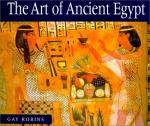|
This section contains 899 words (approx. 3 pages at 300 words per page) |

|
Stylistic Break.
The earliest Egyptian art, created during the pre-dynastic period (4400–3100 B.C.E.), exhibits a coherent style that does not continue into historical, dynastic times (after 3100 B.C.E.). All of this art comes from graves that belonged to non-elite, nongovernmental people. The objects created for these tombs might be considered folk art. The earliest art is handcrafted pottery with a surface ripple that potters created by running a comb over the surface. This pottery was made during the Badarian period (4400–3800 B.C.E.), named after the village of Badari where archaeologists first found it. The English archaeologist W. M. F. Petrie discovered a nearly complete sequence of objects for the subsequent period at the village of Nagada in southern (upper) Egypt. Thus Egyptologists refer to the different chronological stages of this art as Nagada I (3800–3500 B.C.E.), Nagada II (3500–3300 B.C...
|
This section contains 899 words (approx. 3 pages at 300 words per page) |

|




